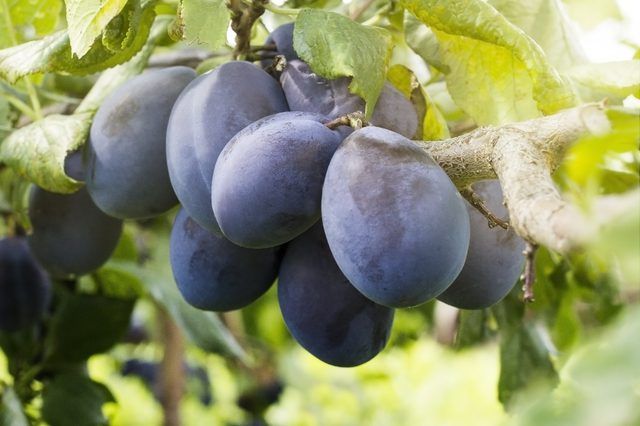Bulbs
Flower Basics
Flower Beds & Specialty Gardens
Flower Garden
Garden Furniture
Garden Gnomes
Garden Seeds
Garden Sheds
Garden Statues
Garden Tools & Supplies
Gardening Basics
Green & Organic
Groundcovers & Vines
Growing Annuals
Growing Basil
Growing Beans
Growing Berries
Growing Blueberries
Growing Cactus
Growing Corn
Growing Cotton
Growing Edibles
Growing Flowers
Growing Garlic
Growing Grapes
Growing Grass
Growing Herbs
Growing Jasmine
Growing Mint
Growing Mushrooms
Orchids
Growing Peanuts
Growing Perennials
Growing Plants
Growing Rosemary
Growing Roses
Growing Strawberries
Growing Sunflowers
Growing Thyme
Growing Tomatoes
Growing Tulips
Growing Vegetables
Herb Basics
Herb Garden
Indoor Growing
Landscaping Basics
Landscaping Patios
Landscaping Plants
Landscaping Shrubs
Landscaping Trees
Landscaping Walks & Pathways
Lawn Basics
Lawn Maintenance
Lawn Mowers
Lawn Ornaments
Lawn Planting
Lawn Tools
Outdoor Growing
Overall Landscape Planning
Pests, Weeds & Problems
Plant Basics
Rock Garden
Rose Garden
Shrubs
Soil
Specialty Gardens
Trees
Vegetable Garden
Yard Maintenance
Plum Trees for Cold Locations
European-type plums and hardy hybrid crosses between Japanese and American plums are well-suit to cold locations.

The edible plum trees (Prunus spp.) that grow in American gardens reflect three main species and crosses that vary in characteristics and tolerances for low winter temperatures. When growing plums in cold climates, it's important to select the right type.
European plums (Prunus domestica) withstand lows in U.S. Department of Agriculture plant hardiness zones 4 through 9. Japanese plums (Prunus salicina) do best in a more limited range from USDA zones 5 through 8 and are often crossed with cold-hardy American plums (Prunus americana), which grow in USDA zones 3 through 8 and produce some equally hardy Japaneselike hybrids. Northern gardeners can rely on European plum varieties and hardy hybrids proven to do well in cold climates.
European-Type Plums
European plums come in varied shapes and sizes, including round, sweet types and the sweet, elongated ovals that are dried to produce prunes. The following are examples of some of the hardiest European plums:
'Dietz' plum (Prunus domestica 'Dietz,' USDA zones 4a through 8), considered by the University of Minnesota to be the hardiest European plum, is a self-pollinating tree with small, sweet, blue-black skinned fruit.
'Mount Royal' plum (Prunus domestica 'Mount Royal,' USDA zones 4a through 8) is a self-pollinating plum that produces small, juicy, blue-black fruit that doesn't cling to the pit.
'Stanley' plum (Prunus domestica 'Stanley,' USDA zones 4b through 9) is a self-pollinating tree known for deep-blue, medium-size fruit that's favored for eating fresh or drying.
Tip
European-type plums do not require cross-pollination with a second plum variety. A single tree can bear fruit, but planting another variety nearby often enhances the crop.
Hardy Hybrid Plums
Like the less-hardy Japanese plums, cold-hardy Japanese-American hybrids are round and perfect for eating fresh, making jams or serving up for dessert. Some of the hardier Japanese-American crosses include the following plums:
'LaCrescent' plum (Prunus 'LaCrescent,' USDA zones 3a through 8) offers an early harvest of small- to medium-sized, yellow fruit with an apricotlike taste. This plum requires another variety for pollination.
'South Dakota' plum (Prunus 'South Dakota,' USDA zones 3a through 8) produces sweet, medium-sized yellow fruit with a red blush. This tree serves as a pollinizer for other varieties.
'Toka' plum (Prunus 'Toka,' USDA zones 4a through 8 ) bears small, dark, cherry-red fruit brimming with flavor. It's an excellent pollinizer for most Japanese, American and hybrid plums.
'Superior' plum (Prunus 'Superior,' USDA zones 4a through 8) is a self-fruitful tree that sometimes serves as a pollinizer for others. It produces heavy crops of large fruit at an early age. Brushed with red, the yellow fruit is good for preserves.
'Underwood' plum (Prunus 'Underwood,' USDA zones 3a through 8) is an early producer valued for attractive horizontal branching in additional to flavorful, medium-large fruit. It requires a pollinizer.
Tip
Many Japanese and hybrid plums cannot pollinate themselves and must be matched with specific pollinizer varieties to bear fruit. Always plant an appropriate pollinizer cultivar or an American plum nearby, if you want fruit.
Plum Cold Care
Known as stone fruits because of their stony pits, plums are one of the hardiest trees of their fruit type. Even so, cold-hardy plums need protection from late spring frosts that can nip buds, flowers or developing fruit.
Give cold-climate plums a spot in full sun with well-draining soil on a protected hillside or other elevated site. This allows cold air to move down and away from trees and limit their exposure to frost. After soil freezes in fall, cover your trees' root zones with a 3- to 4-inch layer of organic mulch. This added protection helps reduce temperature fluctuations in the soil over winter and helps it thaw slowly come spring, so cold-hardy plums stay right on schedule.